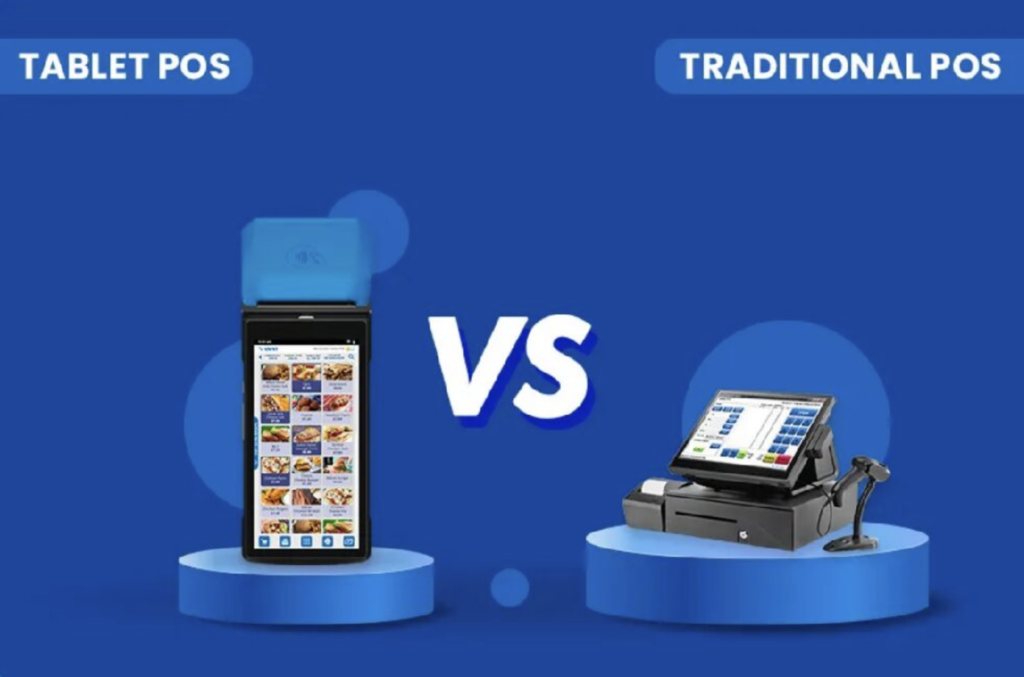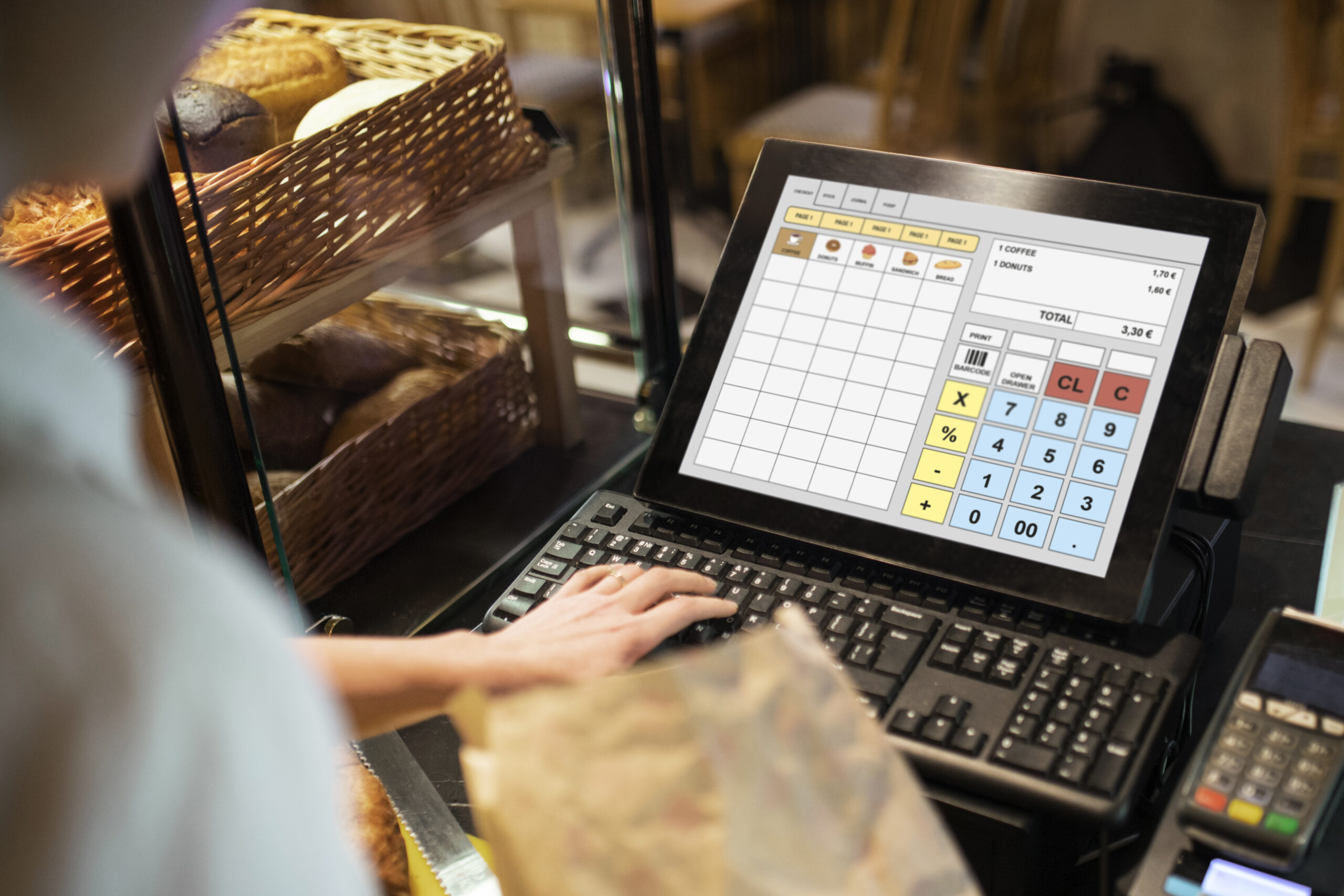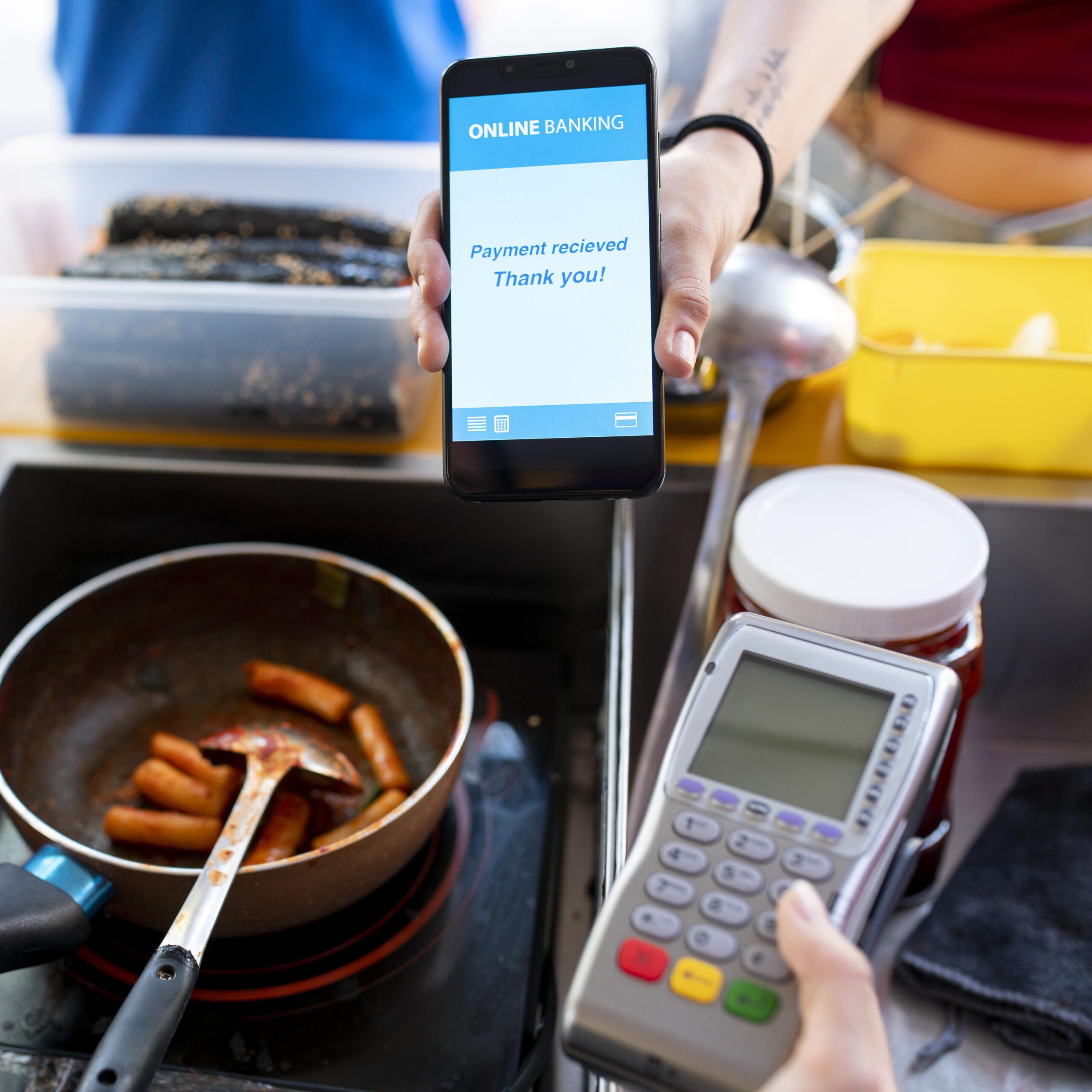Traditional POS System Vs Mobile POS System: Which Is Best For Your business?
Point of sale (POS) technology has significantly benefited from the advancements in online and cloud-based systems in recent years. With the increasing mobility of tools, POS platforms have embraced this evolution by offering mobile payment solutions that operate independently of fixed terminals.
However, despite these advancements, many companies still rely on their traditional, stationary POS terminals, preferring to maintain familiarity and the status quo. It’s crucial for businesses to understand the distinctions between traditional and cloud-based POS systems to make informed decisions that align with their needs. Let’s explore the variances between Traditional POS Systems and Mobile POS Systems, particularly from the perspective of a software development company.

Traditional vs. Mobile POS System
Traditional POS System

Traditional POS System
A traditional POS system, also known as “on-premise” or “legacy”, runs on closed networks and the data is stored on local servers. A simple analogy of this is storing your family photos in your computer at home, which cannot be accessed from anywhere else.
What Is A Mobile POS System

Mobile POS System
The Mobile POS system, also known as cloud-based or Software as a Service POS (SaaS-POS), operates via the web and is hosted on a cloud service, enabling online data accessibility. For instance, all your data is stored in a centralized location such as Google Drive or Dropbox, allowing for access and sharing from any internet-connected device. This exemplifies the convenience and flexibility offered by software development as a service.
Comparison between Traditional and Mobile POS Systems
Data accessibility
Traditional:
The data can only be accessed on-site, meaning that you have to be physically present in a business facility to make any changes to the menu or items, to check employee clock-ins, to see sales report.
Mobile:
Many newer POS platforms include dynamic data analysis and reporting so you can assess the data from anywhere, anytime. The manager can monitor all of the reporting in real-time from anywhere with internet access using any device such as desktop, tablet, mobile, or laptop. Moreover, he can make any changes online, giving remote accessibility and eliminating the need to be there in person to do everything.
Cost efficiency
Traditional:
Traditional terminals are the excellent cash register and help collect sales data, but not much else. Traditional POS systems usually have high upfront costs. In addition, they require a maintenance fee because it performs remotely, which requires additional labour and time. Additionally, in case the system crashes, the cost of re-installation can be expensive.
Mobile:
On the other hands, Mobile POS is often cheaper because the installation is not as complex and it can be installed on existing computers, tablets or smartphones. The software is also updated automatically by the service providers, in which the cost is already included in the monthly or yearly charges. However, in the long-run, the cost may be as expensive as traditional POS because the size of the business can affect the cost of the subscription.
Frequent updates
Traditional:
For many legacy systems, the server needs to be updated manually on-site. These legacy systems need to be updated manually, so the POS software is only upgraded once per year at best.
Mobile:
For SaaS POS systems, the provider implements the updates automatically and remotely, meaning there is no need for on-site visits to update the system. They usually update more frequently than the on-premise systems, and it updates in real-time, ensuring that you are always utilizing the current version of the software.
Innovative Hardware
Traditional:
The hardware of the traditional system is usually quite big, bulky, and heavy. Additionally, POS terminals are sold separately. The most common size of the traditional POS screen is 15 inches. It is not portable but it may prevent theft.
Mobile:
Cloud-based POS, unlike the traditional POS, uses portable devices, such as tablets and mobile phones and has very few hardware requirements. Moreover, SaaS POS system such as Ambur let you install their services on any internet-connected device, and allow for integrating credit card readers, receipt printers, and other tools as you need.
Integrated Systems
Traditional:
For on-premise POS systems, it is often difficult to integrate new modules, and features, and updates. This makes it harder to customize the system, and the business has to use it as is.
Mobile:
In the case of the SaaS POS system, it is possible to fully integrate higher functionality modules and connect with third-party software programs to customize the POS according to the business’s needs. Moreover, advanced cloud-based systems feature CRM for restaurants solutions that allow owners to influence loyalty programs, online ordering, and email marketing based on historical customer data.
Crave Vend case study for Mobile POS System by Savvycom
Traditional POS terminals are not going away anytime soon, however, mobile POS systems are an excellent alternative for a small business in need of an agile and comprehensive point of sale solution. The needs of each business are different, but each business should have a POS system that matches their requirements and values. Taking these POS systems into consideration, Savvycom has designed and developed the Crave Vend app, which enables users to discover fantastic deals while promoting local businesses in the era of digital technology. Crave Vend allows a lot of helpful functions such as locate food merchants, view merchants rich menu, securely order for delivery or pickup, save favourite items and restaurants. Here are some features of Crave Vend:
-
- Ultimate Online Ordering. This feature helps increase sales, productivity and reduces waiting time for customers: A win-win for customers & merchants. Online orders go directly to your POS system to confirm and print to the kitchen printer. No more call from a third party, or customers during the busy time.
- MercuryPay. This is the fast, reliable, secure payment gateway. Moreover, Mercury accepts the most common payment types and card brands, while enjoying reliable uptime, real-time transaction viewing, same day or next day funding capability and promotional payment options.
- Flexible Menu Management. Crave Vend provides easy, quickly add/ remove items, one-touch disable/ enable items. All menu information is synchronized to the cloud for coordinated changes across the entire system including the online menu from a single device. This facilitates merchants to control inventory, get the real-time email and push notification alert.
Savvycom – Your Trusted Tech Partner!
With 25+ years of experience, Savvycom has used digital technology to help businesses thrive across a wide range of industries. We provide from high-quality technology consulting or end-to-end product development to software development consultancy to maximize your business potential.
Savvycom is what you need. Contact us now for more consultation:
- Phone: +84 24 3202 9222
- Hotline: +84 352 287 866 (VN)
- Email: [email protected]


